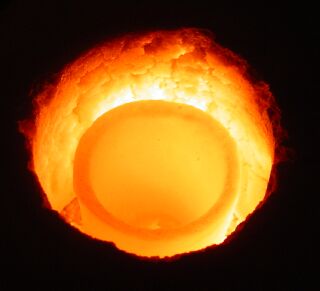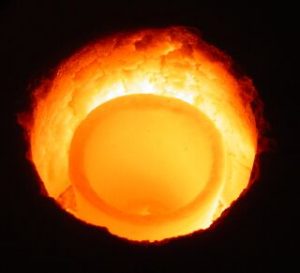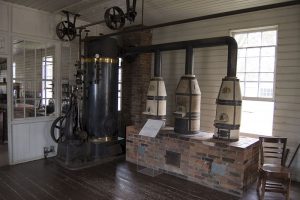- Alumina
- Boron Nitride
- Zirconia
- Other Ceramics
- Applications
- Contact

Crucibles are used in the laboratory to contain chemical compounds when heated to extremely high temperatures. Crucibles are available in many sizes and usually come with a corresponding size lid. When heated over a flame, the crucible is often held inside a pipeclay triangle which itself is held at the top of a tripod.

The crucibles and their lids are made of high temperature resistant materials, usually porcelain, alumina or an inert metal. One of the first uses of platinum was to make crucibles. Ceramics such as alumina, zirconia and especially magnesia will tolerate the highest temperatures. More recently, metals such as nickel and zirconium have been used. The lids are generally ill-fitting to allow gases to escape while heating a sample inside. The crucibles and their lids may have high shapes and low shapes and varied sizes, but small 10-15 ml porcelain crucibles are generally used for gravimetric chemical analysis. These small crucibles and their porcelain lids are quite cheap when sold in bulk to laboratories, and the crucibles are sometimes discarded after use in a precise quantitative chemical analysis. There is usually a big markup when they are sold individually in hobby stores.

In the field of chemical analysis, graphite crucibles are used in quantitative gravimetric chemical analysis (mass analysis of an analyte or its derivative). The use of the common crucible can be the following. A residue or precipitate in a chemical analysis method may be collected or filtered from a sample or solution on a special “ash free” filter paper. The crucible and the lid to be used are pre-weighed very precisely on an analytical balance. After a possible washing and / or pre-drying of this filtrate, the residue on the filter paper can be placed in the crucible and cooked (heated to very high temperature) until all the volatiles and moisture are driven out of the sample residue in the crucible. The “ashless” filter paper is completely burned in this process. The crucible with the sample and the lid is allowed to cool in a desiccator. The crucible and the lid containing the sample inside are weighed very precisely only after having been completely cooled to room temperature (a higher temperature would cause drafts around the scale giving inaccurate results). The mass of the previously weighed empty crucible and the lid is subtracted from this result to give the mass of the residue completely dried in the crucible.
Tags: graphite crucibles, Zirconia, Zirconium oxide